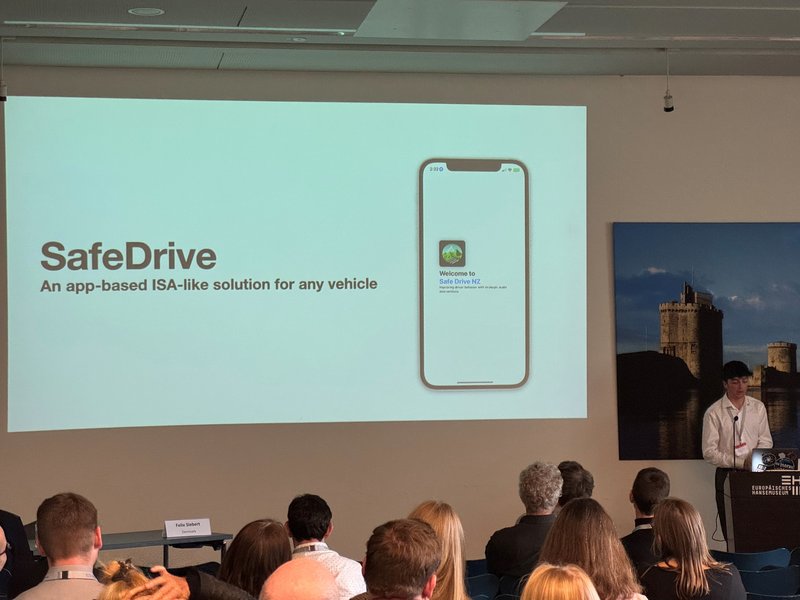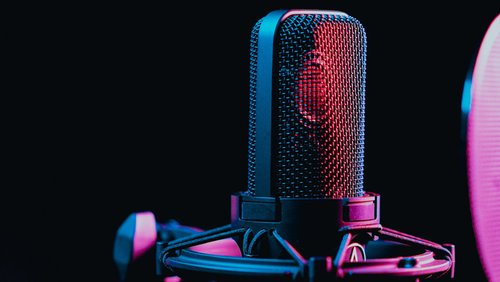31 Jul 2024
Sixteen-year-old Wellington College student Jesse Rumball-Smith has a passion for engineering – especially his latest creation, an app he researched and coded himself, called SafeDrive.

Jesse Rumball-Smith
“I got the idea at Easter time,” he said. “I was watching the news, and instead of talking about holiday cheer, it was all about the holiday road toll. That kind of took me down the rabbit hole of ‘What are we really doing in New Zealand to make our roads safer?’”
Jesse found that much of New Zealand’s road safety strategy was focused on road design. “It was all about safer road barriers, safer intersections, or how to better protect people during a crash,” he said. “But almost 90% of crashes include driver-related factors like speeding, distraction or fatigue, so all that is just an ambulance at the bottom of the cliff. With SafeDrive, I want to prevent a crash before it happens.”
..to me it’s super inequitable that only the richest people in the country get access to this really effective safety technology.
Jesse also learned that effective interventions are available – if you can afford it. “Your brand spanking new car might have something called Intelligent Speed Assistance [ISA], which actually does reduce your chances of crashing by warning you if you speed,” he said. “But most New Zealanders don’t have access to that – we’ve got one of the oldest fleets in the world – and to me it’s super inequitable that only the richest people in the country get access to this really effective safety technology.”
The question then became how to democratise the technology. “We’ve all got a supercomputer in our pockets now,” Jesse said. “So I decided to create an app that built on some of the ideas behind ISA technology – something accessible to anyone with a smart phone mounted on their dash.”
Jesse’s focus on equity presented some additional design challenges. “I couldn’t use mobile data – if it went up to the cloud every time the app needed to check the speed limit where you’re driving then it would run up your data bill, and people without a SIM card couldn’t use it,” he said. “I wanted SafeDrive to always work, even in airplane mode.”

Jesse presented on SafeDrive at the European Human Factors and Ergonomics Conference in Germany. Image: Supplied
Fortunately, NZ Transport Agency Waka Kotahi provides a national speed limit registry, which the app can download and update when it has access to Wi-Fi. This means that when a user is driving, it only uses the phone’s GPS and accelerometer to detect speeding, by comparing the phone’s speed to the locally stored registry.
The next challenge was figuring out how to convince people to slow down once the app knew they were speeding. “Some cars with ISA will beep and flash at you when you speed, but that’s both annoying and distracting,” Jesse said. “So we used ‘nudge theory’ – spoken messages from the app that gradually escalate, to make the driver feel more accountable.”
But what I’m most proud of, is that on each following journey, drivers got better and better – we were literally reprogramming them to be better drivers – because most people don’t want to crash.
The messages were designed with input from transport and clinical psychologists. They start small, saying things like “Heads up! The speed limit here is 50km/h.” If that doesn’t work, they escalate, using real data to convince the driver to slow down. For example, “Hey, if you keep driving at this speed, you’ll only arrive 45 seconds earlier,” or “Warning! At this speed, you’re 1.5x more likely to have a major crash. Please slow down.”
Similar messages were designed for other driver-related risk factors like fatigue, distraction and bad weather.
The results from Jesse’s early testing have been promising. “We had about 50 or 60 testers log about 500 kilometres worth of journeys, and we found that speeding and distraction decreased by 35% and speeding severity decreased by 20%,” said Jesse. “But what I’m most proud of, is that on each following journey, drivers got better and better – we were literally reprogramming them to be better drivers – because most people don’t want to crash.”
Jesse is already working on updated features for the app. “I built a new version of the fatigue detection feature on the weekend,” he said. “Instead of using drive time and time of day, it uses the selfie camera and machine learning to look at your eyes and face to detect your level of fatigue. We’re also looking at using the front camera as a dashcam.”
He is also seeking funding and partners to further develop the app. “There’s big potential for this sort of technology in the fleet management area,” said Jesse. “But what I’m more interested in personally is the consumer side, and there’s a whole lot that can be done there with insurance companies and brand deals.”
The worst piece of advice I’ve ever been given is to be realistic. So if you’ve got big ideas and big passions – don’t be realistic, just ask for help.
Such deals might offer cheaper insurance to regular users, or vouchers for discounts or free products if they drive a certain number of safe kilometres in a row. “In a partnership like that, everyone wins – the brands look good for supporting a safety initiative, the app gets income, and users get rewards for driving safely,” he said.
All Jesse needs now is more people to get behind the product. “I’m seeking investment,” he said. “There are potential clients who are interested and ready to go, but I’m still only a school student, so I’m limited by capacity. We need to hire developers.”
Jesse also offered advice for students interested in becoming entrepreneurs. “The best piece of advice I’ve ever been given is to always ask for help,” said Jesse. “The worst piece of advice I’ve ever been given is to be realistic. So if you’ve got big ideas and big passions – don’t be realistic, just ask for help.”



